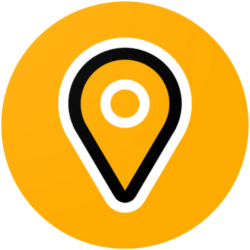
Naver Maps v. Google Maps Culture Shock in Korea
Dealing with the culture shock around map apps might exist as one of the MOST frustrating parts of moving to Korea. We compiled a breakdown of the most common culture shock points communicated in our communities. Hopefully, the following information helps you 1) know what to expect when you arrive in Korea and 2) feel less alone with the struggle. We throw a few pro tips in as well.
Table of contents
- Naver Map Cultures Shock in Korea
- Naver Maps User Interface
- Language Barriers
- Complex Route Options
- Integration with Local Services
- Difficulty with English Address Formats
- Frequent Updates to Maps and Locations
- Mapping Data Unstable in New Cities
- Public Transit Detail Overload
- Unique Search and Filter Options
- Search Defaults to Seoul
- Searching in Hangul Still Most Effective
- Google Maps Culture Shock
- Read More Blogs About Naver Maps
Naver Map Cultures Shock in Korea
The culture shock around Naver maps primarily stems from the stress of learning something new and the language barrier instead of problems with functionality. Often, when you move to South Korea you start to feel the social pressure to use Naver Maps. That pressure often feels very stressful and unfounded. I mean, you’ve lived off Google Maps for years just fine. Why learn a whole new user interface, iconography, and verification system?
We will not lie. We understand why adapting to the Naver Maps system may feel hard. You will likely begin using Naver Maps via the English language interface which has many issues. However, eventually, you will find your way through the interface and language issues into a happy place filled with useful information.
Let’s jump into the culture shock points regarding Naver Maps to hurry that adaptation process along.
Naver Maps User Interface
International residents from Western countries may struggle with the new UX/UI (User Experience and User Interface) design. Eastern and Western tech companies often use different types of UX/UI design systems due to differences in culture. Such UX/UI systems contain hidden culture and assumed knowledge. This can make adapting to the new systems very stressful. Moving from Google Maps in Naver Maps can feel overwhelming.
- Pro Tip: Play around with the Naver Maps and click as many buttons as you can to see what they do. Spend time exploring the app when you aren’t under pressure to find something immediately. Also, ask many questions of others who use the app!
Language Barriers
While Naver Maps offers English-language options, many details (like user reviews, menus, and local business names) are only available in Korean. This can be challenging for those not fluent in Korean. Some people say they can’t tell if they have the English version of the app since so much Korean still exists.
- Pro Tip: Use Naver’s in-app translation feature or copy text into a translation app for a quick understanding. It’s also helpful to familiarize yourself with basic Korean terms related to navigation, like 출구 (exit), 입구 (entrance), and 주소 (address).
Complex Route Options
Naver Maps often provides multiple route options with details on real-time traffic, alternative routes, and specific arrival times. Additionally, they will provide such routes in the middle of your trip based on current conditions. While helpful, the amount of detail can feel overwhelming, especially if users feel accustomed to simpler interfaces.
- Pro Tip: Start by choosing the shortest or most direct route. Once comfortable, explore other options like “eco-friendly routes” (친환경 경로) or “avoiding tolls” (톨비 회피) to make the most of the route customization.

Integration with Local Services
Naver Maps integrates with local Korean services. This includes such services as food delivery, reservation platforms, and wait lists for restaurant tables that have no English language interface. Additionally, such services may require you to have legal residency in South Korea. This means you need a Korean Foreign Residence Card, smartphone, and bank account.
This level of integration may feel unfamiliar to many international users and might feel intrusive or cumbersome. Additionally, if you aren’t a Legal Resident of South Korea you may not be allowed to access some features. This can feel alientating and frustrating.
- Pro Tip: Create a Naver account early on and explore its features in advance to see what level of access you have. If you have SOFA status, get your linked FRC/Korean Phone/Bank Account so that you have access to Legal Resident systems.
Difficulty with English Address Formats
For a number of reasons, Romanized Korean addresses often do not work in Naver.
- Pro Tip: Always use an address written in Hangul or a business phone number to find a business on Naver Maps.
Frequent Updates to Maps and Locations
Naver Maps changes often. In fast-developing areas of the country, new establishments can appear or disappear overnight. This level of change might surprise users who are accustomed to more static map data.
- Pro Tip: Check the map shortly before your trip to ensure the location details haven’t changed. If visiting a new area, search for recent Naver Blog posts about the place for the most up-to-date information. You can use the Google Translate extension for Chrome to read Naver Blogs written in Korean.
Mapping Data Unstable in New Cities
Sometimes South Korea builds completely new cities. During the construction time, Naver Maps often can’t route correctly in the area. Sometimes this can go on for years. If you live in a new city or neighborhood, this can feel very frustrating.
Public Transit Detail Overload
Naver Maps provides extensive transit details. Honestly, it’s like having a personal assistant walk with you through each step. Naver Maps provides estimated costs, exact arrival times, platform numbers, alarms to get off the bus, and transfer points. If you aren’t used to taking the bus this might feel overwhelming. However, you will quickly fall in love with all these features when you use them in your daily life.
- Pro Tip: Focus on the main details, such as the departure time and destination, and use the extra information as needed. Naver Maps allows you to save favorite bus stops and subway stations, so you can streamline your most-used routes.
Unique Search and Filter Options
The search options on Naver Maps include filters (e.g., pet-friendly, wheelchair accessible, parking available) that might be unfamiliar to new users but highly specific.
- Pro Tip: Explore the filter options to find locations that match your needs. For example, if you have a pet, look for “pet-friendly” (반려동물) spots. These filters can provide unique insights that Google Maps might not highlight as clearly.
Search Defaults to Seoul
If you don’t specify your area, Naver Maps only searches Seoul. This exists as our point of continued frustration and culture shock. This often misleads international residents into thinking what they need only exists in Seoul.
- Pro Tip: You need to add the exact area of your search to any of your keywords. For example, if you want to find pet-friendly places in Pyeongtaek-si you put 반려동불 (pet-friendly) 평택시 (Pyongtaek-si). You can use Papago to get the names of different cities in Hangul.
Searching in Hangul Still Most Effective
Even though Naver Maps offers an app with an English language interface, you still need to search in Hangul to get good results.
- Pro Tip: Use Papago or ChatGPT to get keywords for searching in Naver Maps. English language search results are limited at best.
Google Maps Culture Shock
With all those struggles learning a new system like Naver Maps, why would you give up Google Maps (This includes WAZE which is a Google subsidiary)? Why not stick with what you know? Well, that’s because the culture shock surrounding Google Maps generally comes from a lack of functionality and outdated and inaccurate information. Let’s get into that next.
Limitations for Google Navigation
Google Maps can’t provide as accurate driving directions in Korea as it does in other countries. You might be able to find many things in Google Maps, but you will still need to switch to Naver Maps for accurate and specific driving, transit, or walking directions.

Transit Information Isn’t Always Reliable
While Google Maps does show some transit options, they may not be updated with real-time schedules. For the most reliable and up-to-date information, switch to local apps like Naver Maps or KakaoMap for public transit. This can feel especially stressful because it FEELS like you have access to Korean transit information but then then you can’t fully trust it. This is a Google problem and not a Korean transit problem.
Limited Street View Coverage
Google Maps has limited street view access in Korea compared to Naver Maps. For a more comprehensive view of the streets and surroundings, use Naver Maps’ street view. If you use Google Street View you are looking at data from many years past. You can’t trust it.
Less Detailed Business Listings
Google Maps tends to have less detailed information on Korean businesses compared to Naver Maps. That’s because businesses need to maintain their business listing to keep information currently Unless a business focuses on serving foreigners, they aren’t managing their Google listings. Instead, they only focus on their Naver Maps business listing. For details on business hours, menu options, and other specifics, try cross-referencing both apps or use Naver Maps as your primary resource.
Difficulty with Korean and English Address Formats
Google Maps might not recognize often can’t recognize Korean addresses in English or Korean. In most cases, Naver Maps is often better suited for handling the local address structure. Additionally, in Naver Maps, most business phone numbers also pull up the business and you don’t even need the address.
Lack of Integration with Korean Services
Google Maps doesn’t integrate directly with local reservations or delivery services. For restaurant reservations or food delivery options, use specific Korean apps like Coupang Eats, Yogiyo, or Baemin.
Read More Blogs About Naver Maps
Want to know more about using Naver Maps in South Korea? We also recommend reading the following blog posts.

Founded in 2015, the South of Seoul team consists of volunteers on three continents working together to support English-speaking people traveling or living in South Korea. South of Seoul volunteers work with organizations and individuals across South Korea to improve equitable access to information across South Korea. Much of South of Seoul’s information focuses on Pyeongtaek, Gyeonggi-do, South Korea.
Blogs published under the authorship of “South of Seoul” include blogs compiled by multiple volunteers to improve access to standardized information unrelated to individualized personal experiences.





